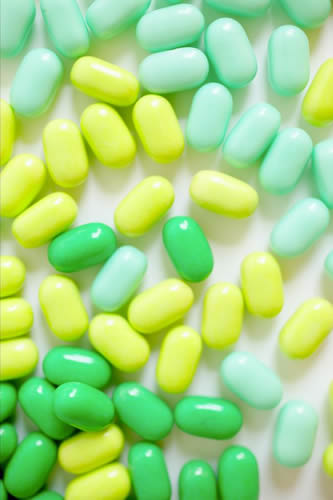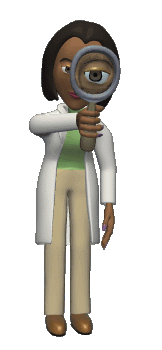Social Work Services
Page Navigation
- Frontier High School
- Drugs/Alcohol
-
Drugs/Alcohol
**LOCAL SUBSTANCE USE RESOURCES ARE LISTED ON THE RESOURCE PAGE Why do people take drugs?

Here are some of the reasons young people have given for taking drugs:
• To fit in
• To escape or relax
• To relieve boredom
• To seem grown up
• To rebel
• To experiment
They think drugs are a solution. But eventually, drugs become the problem.
An estimated 208 million people internationally consume illegal drugs. In the United States, results from the 2007 National Survey on Drug Use and Health showed that 19.9 million Americans (or 8% of the population aged 12 or older) used illegal drugs in the month prior to the survey.
You probably know someone who has been affected by drugs, directly or indirectly.
The most commonly used- and abused- drug in the US is alcohol. Alcohol-related motor accidents are the second leading cause of teen death in the United States.
The most commonly used illegal drug is marijuana. According to the United Nations 2008 World Drug Report, about 3.9% of the world’s population between the ages of 15 and 64 abuse marijuana.
Young people today are exposed earlier than ever to drugs. Based on a survey by the Center for Disease Control in 2007, 45% of high school students nationwide drank alcohol and 19.7% smoked pot during a one-month period.
**Source: www.drugfreeworld.orgWhat are the signs/symptoms of drug use?
 If you suspect someone is using drugs or alcohol, here is what to look for:
If you suspect someone is using drugs or alcohol, here is what to look for:Behavioral Issues
➢ Change in relationships with family members or friends
➢ Loss of inhibitions
➢ Mood changes or emotional instability
➢ Loud, obnoxious behavior
➢ Laughing at nothing
➢ Unusually clumsy, stumbling, lack of coordination, poor balance
➢ Sullen, withdrawn, depressed
➢ Unusually tired
➢ Silent, uncommunicative
➢ Hostile, angry, uncooperative
➢ Deceitful or secretive
➢ Makes endless excuses
➢ Decreased motivation
➢ Lethargic
➢ Unable to speak intelligibly, slurred speech, or rapid-fire speech
➢ Inability to focus
➢ Hyperactive
➢ Unusually elated
➢ Periods of sleeplessness or high energy, followed by long periods of “catch up” sleep
Personal Appearance
➢ Messy, careless appearance
➢ Poor hygiene
➢ Track marks on arms or legs (or long sleeves in warm weather to hide marks)
➢ Burns or soot on fingers or lips
➢ Red, flushed cheeks or face
Personal Habits
➢ Smell of smoke on breath or clothes
➢ Chewing gum or mints to cover up breath
➢ Heavy use of over-the-counter preparations to reduce eye reddening, nasal irritation or bad breath.
➢ Avoiding eye contact
➢ Clenching teeth
Health Issues
➢ Frequent nosebleeds
➢ Runny nose, not caused by allergies or a cold
➢ Frequent sickness
➢ Sores, spots around mouth
➢ Queasy, nauseous
➢ Seizures
➢ Vomiting
➢ Wetting lips or excessive thirst (known as “cotton mouth”)
➢ Sudden or dramatic weight loss or gain
➢ Skin abrasions/bruises
➢ Accidents or injuries
➢ Depression
➢ Headaches
➢ Sweatiness
School Issues
➢ Truancy or loss of interest in schoolwork
➢ Drop in grades
➢ Loss of interest in extracurricular activities, hobbies or sports
➢ Failure to fulfill responsibilities at school
➢ Complaints from teachers
➢ Reports of intoxication at school
Individual Factors that May Contribute to Drug Use
➢ Begins drinking or using drugs at an early age (10-12 years old)
➢ Teen’s thinking that drinking and/or drug use isn’t harmful
➢ Attention Deficit Hyperactivity Disorder (ADHD)
➢ Mental health disorders such as depression, anxiety and conduct disorders
➢ Rebelliousness, frequent breaking of rules
➢ Unable to control impulses
**Source: www.intervene.drugfree.orgPARENTS: WHAT CAN YOU DO?
As your teen begins to gain self-confidence andfollow his or her own agenda, your job as a parent gets morechallenging. Teens can be prone to unpredictable and sometimes riskybehavior – including experimentation with drugs – during this criticaltime. But you"re still the biggest influence in your teen"s life.
Studieswhich track attitudes toward drugs reveal that one of the most criticalinfluences on kids’ decisions about taking drugs is the input ofparents. In fact, kids who say they learn a lot about the risks ofdrugs at home are up to 50 percent less likely to use drugs.
Steps in Preventing Teen Drug Use
Researchsuggests that brain development continues throughout the teenage yearsinto the early twenties, and that drug experimentation during this timeis more risky to the still-developing brain than previously believed.However, there are many steps you can take in preventing teen drug use.
Help your teen stay safe and make healthy decisions by:
- Keeping the lines of communication open,
- Setting clear limits, and
- Being directly involved in his or her everyday world.
It’simportant to talk often, listen regularly, and communicate clearly thatyou do not want your teen using drugs. In addition to following thesteps in preventing teen drug use listed here, you can encourage yourteen to spend time with positive role models, including peers, familymembers or other influential adults. These key influencers can helpyour teen avoid the dangers of drugs and reinforce the benefits ofhealthy, drug-free living.
TIPS ON PEER INFLUENCES AND HEALTHY FRIENSHIPS:
Get to know as many of your teen’s friends as you can.
Knowing his friends will help you tabs on his life and may help keep him out of trouble. If he and his friends hangs out at your house, introduce yourself and ask a question or two. If they don’t hang out there, find ways to meet them — offer rides to and from events, have them over for dinner, etc. Stay alert to changes in his social circle, too. (When teens switch, it sometimes means trouble.) And if something doesn’t seem right to you, act on it.If you don’t like your teen’s friends, figure out why.
Do you suspect they use drug or alcohol use? Do you think they treat your teen badly? Do you have a personality conflict? No matter what the reason is, remember this: If you suspect that a friend is a bad influence, don’t wait. Talk to your teen, make your concerns and expectations clear, keep a closer eye on him, and, if necessary, help him connect with a wider circle of kids.Meet as many of your teen’s friends parents as you can.
The parents can tell you a lot about their teen and help you keep close tabs on yours. You might even consider calling or getting together regularly to share information about how your teens behave, what they like to do, and any changes you’ve noticed lately.Find out where your teen hangs out most of the time.
Knowing where she is will help you find her if there’s an emergency. Plus, knowing the environment she’s in will tell you which influences (good and bad) she’s around. If you’re not crazy about the places she hangs out, help her find one you do like. It could be your house, a friend’s house, a clubhouse or after-school program — any place with a trusted adult in charge.Make sure your teen hangs out where there’s adult supervision.
Teens who aren’t regularly monitored by their parents are four times more likely to use other drugs than those who are.1 If possible, encourage your teen and her friends to hang out at your house. (Set aside a comfortable spot for them and keep plenty of snacks on hand.) You’ll become more connected to her and more aware of what she’s up to. If hanging out at your house isn’t an option, find another parent who’s able to have them over, or an activity that
has adult supervision.**Source: www.drugfree.org/teenbrain/tools/pickyourbattles/friendships.htm
1 Metzler, Rusby, and Biglan, Community Builders for Success: Monitoring After-School Activities

